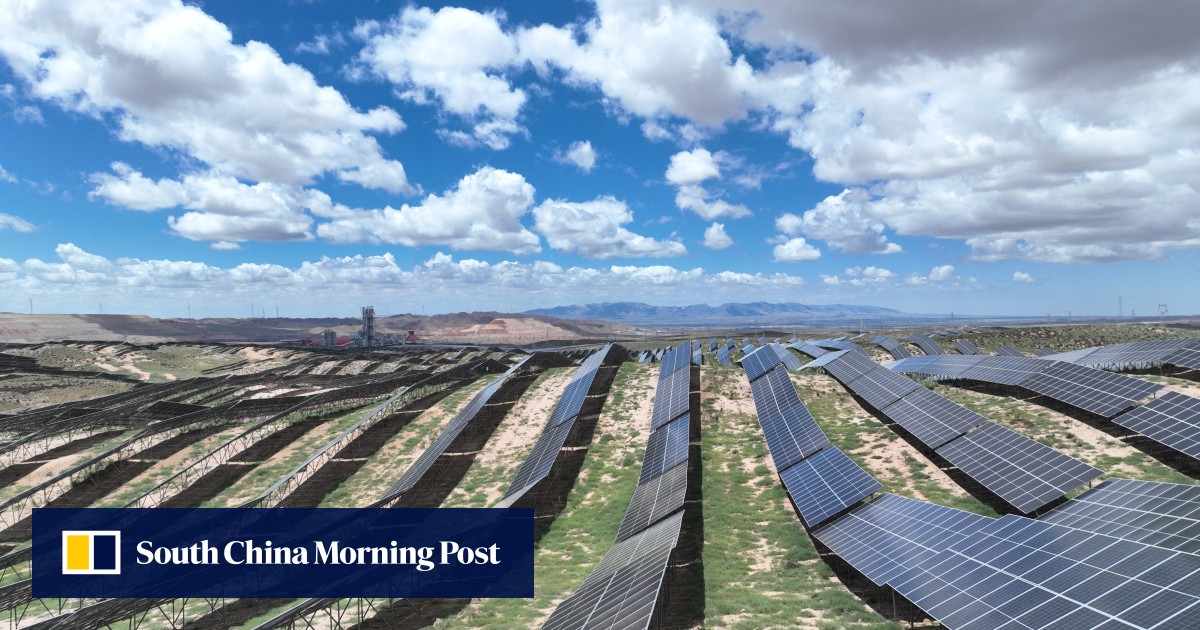
Chinese tech giants trail on renewable energy use, and AI will put them further behind

China’s leading technology firms have made limited progress in delivering on their renewable energy goals, as the sector’s power consumption is expected to surge on the back of demand for artificial intelligence (AI) and cloud services, according to a report from Greenpeace East Asia. The group urged the tech giants to take firmer action on addressing climate change.
The environmental group released a report on Thursday that tracked the renewable energy use of China’s top 25 cloud providers and data centre operators, which together account for more than half of the country’s cloud market and more than 60 per cent of the data centre market.
Alibaba Group Holding, Tencent Holdings and Baidu took the top three spots in the ranking of 10 cloud providers for their purchase of renewable energy, carbon reduction measures and targets, and data transparency. GDS, Chindata and VNET Group topped the list of 15 data centre operators for their renewable energy procurement.
“Over the past two years, some top companies have reported significant breakthroughs in their renewable energy consumption,” said Lyu Xin, a climate and energy campaigner at Greenpeace East Asia. “However, advancements have been uneven across the industry.”
01:45
Chinese AI-generated cartoon series broadcast on state television
Chinese AI-generated cartoon series broadcast on state television
Over the past two years, renewable energy procurement by top Chinese tech companies has increased significantly, according to Greenpeace. As of last month, five of the 25 companies in the study – Alibaba, China Telecom, Chindata, GDS and Tencent – had reported annual renewable energy ratios that exceeded 10 per cent, compared with just one company, GDS, in the 2022 study.
The report also found that only eight out of these 25 companies have committed to 100 per cent renewable energy use by 2030, and only six have set carbon neutrality goals for their direct and indirect emissions from the purchased energy, the so-called scope 1 and scope 2 emissions, by the end of the decade.
Greenpeace urged all tech companies to target 100 per cent renewable energy and carbon neutrality by 2030. Companies should also include scope 3 emissions – indirect emissions in their value chain – in their carbon neutral targets, the environmental group said.
It is crucial for the tech companies to rapidly expand renewable energy consumption given the exponential development of generative AI, which could fuel a boom in data centre construction and require huge amounts of energy, according to Greenpeace.
By 2030, AI is projected to drive a 160 per cent increase in power demand for data centres worldwide compared with 2023, according to research by Goldman Sachs.
Data centres are expected to account for 3 per cent of global electricity consumption by 2028 and 7 per cent by 2035, or about 3,100 terawatt-hours in a decade, according to investment bank Macquarie.
In China, which has the world’s largest 5G network and one of the world’s biggest data-centre industries, carbon emissions from digital infrastructure are projected to increase by 152 per cent to 310 million tonnes in 2035, compared with 2020, according to a report published by Greenpeace in 2021.
The sector is expected to consume 782 billion kilowatt-hours of electricity by 2035, or about 5 to 7 per cent of national power consumption, compared with 2.7 per cent in 2020, the group said.
With China approaching its 2030 deadline of peaking nationwide carbon emissions, Beijing has set policies to decarbonise the power-hungry digital infrastructure sector including cloud services and data centres.China’s Ministry of Industry and Information Technology listed the sector as a key decarbonisation target alongside traditional heavy-emitting industries in 2022. The ministry ordered data centre operators and telecoms providers to conserve water and electricity, to locate facilities in areas with plentiful renewable energy and to develop low-power facilities and equipment.
Source link



